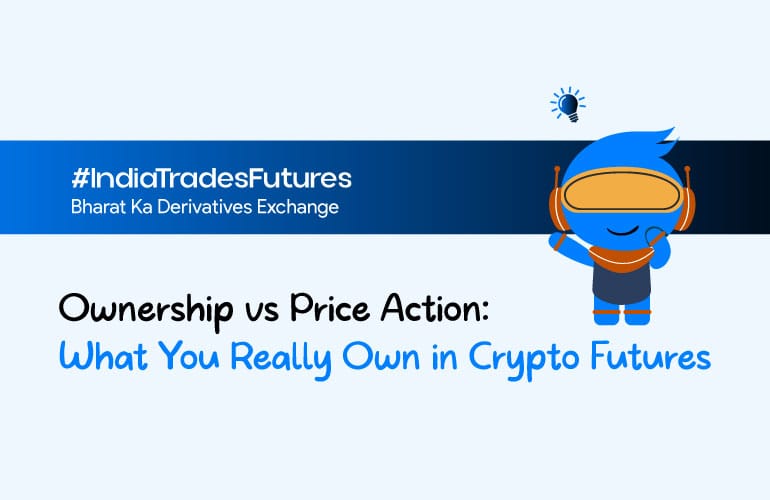The crypto market offers plenty of opportunities, and understanding what you’re actually trading is crucial. Trading crypto futures isn’t the same as owning crypto. it’s different altogether. In this blog, we’ll break down spot trading versus futures, explain why futures don’t mean ownership, dive into how INR-margin futures work, and highlight why this model suits many traders.
Spot vs Futures: Understanding the Core Differences
Spot Trading: Direct Ownership
When you purchase a cryptocurrency on a spot exchange, you’re buying the actual asset. For example, if you buy 1 Bitcoin (BTC), you now own 1 BTC.
You can:
- Transfer it to a personal wallet
- Stake it to earn rewards
- Hold it long-term
In spot, you pay the full amount upfront—there’s no borrowing, no leverage. And you hold the asset directly in your wallet or exchange account.
Futures Trading: Contracts Without Ownership
Futures trading works differently. When you trade crypto futures, you’re not buying the coin itself. Instead, you’re entering into a contract that tracks the price movement of a cryptocurrency.
Another critical feature of futures trading is leverage. It allows you to open a position larger than your initial margin deposit, enabling both greater potential gains and increased risk. In spot trading, leverage is not natively offered—you buy only what you can afford. For example: If Bitcoin is priced at ₹50 lakh, ₹1 lakh in spot trading buys 0.02 BTC—simple ownership with no leverage.
But in futures trading with 5x leverage, that same ₹1 lakh can control a ₹5 lakh position, giving exposure to 0.1 BTC. This amplifies both potential profits and risks based on price movements.
Why Futures Trading Does Not Involve Ownership
Futures trading is designed for speculation—not for holding or using the underlying asset. Here’s why futures don’t provide actual ownership of cryptocurrency:
No actual coin is received. The trade involves a financial derivative tied to the asset’s price.
Settlement is in fiat or stablecoins, with no transfer of crypto.
A funding rate mechanism balances perpetual contracts near the spot price. If the futures price is above spot, long positions pay shorts and vice versa—an internal mechanism unrelated to asset ownership.
INR-Margin Futures: How It Works and Why It Matters
INR-margin futures allows users to trade cryptocurrencies using INR as collateral on Pi42. This is different from traditional futures platforms that require stablecoins like USDT.
Here’s how INR-margin futures work:
- You deposit INR into your trading account.
- You open a long (buy) or short (sell) position on a crypto futures pair.
- You can use leverage to amplify your exposure.
- All profits and losses are settled in INR.
- No stablecoin or actual crypto is required at any stage.
Advantages of INR-Margin Futures
Though you don’t own any crypto in this model, INR-margin futures offer several compelling advantages:
1. No Self-Custody Risks
You don’t need to manage private keys or worry about wallet security. Since you’re not holding any actual crypto, there’s no risk of losing funds due to wallet hacks or user errors.
2. Fast and Efficient Trade Execution
Futures markets are typically more liquid and allow quick entries and exits. Spot markets, especially for large trades, can suffer from slippage—where the final executed price is worse than expected due to insufficient liquidity. Futures mitigate that with more precise and fast order fills.
3. Leverage for Higher Exposure
You can trade larger positions with smaller capital, making it easier to capture opportunities during short-term price moves.
4. Tax and Cost Benefits
Spot crypto trading in India may incur a 1% TDS and a 30% capital gains tax. However, INR-margin futures may reduce some of these burdens, as they exempt you from paying TDS and VDA tax on Pi42, and allow for the offsetting of losses. Additionally, avoiding stablecoin transactions can help eliminate currency conversion costs.
With crypto futures especially INR-margined contracts you’re trading a position, not the asset itself. It’s a leveraged contract that mirrors price movements, offering exposure without ownership. For those targeting short-term trades, price speculation, and efficient capital use with low operational effort, futures trading provides a strong edge.

